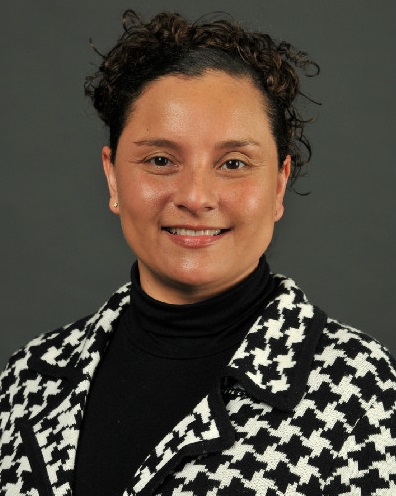
visivastudio/Shutterstock
If one has plumbing issues, a plumber is called in, not kind people who want to make a difference.
Equity and inclusion cannot be buzzwords that are conveniently used reactively to convey a message, apply for funding, be included for some other surface-level purpose or to check a box, even if “well-intended.” Marginalized and under-represented populations and those long committed to anti-racist, anti-bias and anti-oppressive work have not suddenly entered a new awareness or level of consciousness.
We have been collaborating, advocating and fighting for change while also having to defend, prove, assimilate, plead and more with leaders and decision-makers for much-needed representation and change — attempting to prepare instead of repair.
Marginalized folk have been expressing concerns likely since many organizations were formed or at least since allowing anyone to join and participate. In light of recent horrific situations caught on camera, there are now new things to balance: the trauma of daily seeing more harm done, the centering of dominant population reactions and the performative acts of those just joining the movement.

Marcy L. Peake
Decision-makers, boards and leadership teams often lack the representation of those being served by an organization, even in the OST sector. Equity, inclusion and diversity efforts are yielding no or little results for multiple reasons; the words are used but lack alignment with meaningful action, policy and procedures. The expectations for these efforts are at times tasked to staff who are charged with many other things, who may not have any expertise driving systemic change in these areas and who lack the resources and authority to execute the dismantling and rebuilding required. The work becomes that of a committee and when related issues arise, the committee is expected to respond and address the issue while leaders and decision-makers do not participate or assume any responsibility.
Rather than expending energy and resources assigning blame for how an organization got here, leaders must commit to the work that is necessary both personally and professionally to become culturally agile and understand how to embed equity and inclusion throughout every aspect of their organization, preparing instead of repairing. The principles of equity and inclusion and the corresponding work, if truly valued by an organization, must be funded and resourced for meaningful outcomes.
Not OK to stay stuck
Relying on a few informed and passionate individuals in an organization is not a sustainable, practical or effective strategy. Also, not a strategy that leaders are typically accustomed to when they seek services or go to work. For example, if one has plumbing issues at home or work, many are likely to call a plumber. If there are IT issues, technology specialists are called in to address the issues, not kind people who want to make a difference.
This work should not be treated any differently. How we have been socialized around it, what levels of oppression one experiences or understands and how truly committed to the values leaders are is why this work is minimized and organizations get stuck.
Equity and inclusion are not after-the-fact concepts; they must be the foundation of all that is done, regardless of the surface-level homogeneity of a community or population served and never to ease the needs or feelings of those not being impacted. If these concepts guided our work, there would be no need for things like social emotional learning, trauma-informed care, STEM initiatives for girls and many other examples: Our programming, environments, staff expectations and professional development, policies and procedures would be designed to welcome all who entered.
Instead, dominant culture norms drive the work of most organizations, and attempts to be “inclusive” are made but this often translates to, “All are welcome but you must adjust to the dominant culture norms.”
A recent example of repairing instead of preparing: Many well-intentioned organizations reacted and were quick to issue “solidarity” statements this summer only for some to catch backlash and were left to wonder, “What went wrong?” A lot of these statements were too little, too late and were received as disingenuous because those most impacted by oppressive acts were not consulted or part of creating these statements.
The statements were just words on paper without real action, accountability or change; sometimes done so the dominant culture could ease guilt and feel as though they did something. An example I use when consulting: Consider a nonmedical person finding someone with a broken leg. This untrained person can drop to the ground, hold the person’s hand, say words of comfort and yet the leg is still broken.
It will remain broken until someone with the appropriate knowledge, skills and resources can fix it. The untrained person reacts in ways that support their need to do something but what they are doing is really fulfilling their own needs, not doing anything to fix the broken leg. Although the person with the broken leg might get some temporary comfort from this act of kindness, they really want the pain to subside and the leg fixed.
There seems to be a genuine interest nationwide in creating equitable and inclusive learning and working spaces but where and how to start is where many organizations get stuck. Getting stuck is understandable; staying stuck is no longer acceptable. Doing nothing or doing the same thing will continue to produce unhelpful results and likely lead to undesirable outcomes. There are steps, guided by research, that can assist the OST sector with creating authentic equitable and inclusive environments.
How to begin preparing instead of repairing
- Acknowledge that assistance is necessary. Allocate the resources (both time and money) to contract with experts in the field of equity, inclusion and diversity.
- Create an RFP to hire experts. At a minimum, the RFP should require responses that include clearly defined deliverables, expertise and experience of the consultant/team, the research that supports their approach, previous client recommendations and a budget. An RFP conveys a real commitment to the work, an organization starting with an equitable and exclusive process for guidance. This is an unregulated industry so it is important to expect interested consultants to earn the privilege based upon experience and expertise to assist your organization.
- Review your organization’s board membership and leadership team. If not representative of the populations served and if the majority have no experience interacting with the populations served, changes are needed (at the very least, intensive professional development and at the most, intentional appointments to these positions). It is great to have board members and leaders who have certain skills to assist with fundraising, like hosting golf outings, auctions or wine tastings because money is necessary to serve youth. However, if these same people never visit and interact with youth, families and employees at your organization or rarely (if ever), visit the neighborhoods served, then these folks would be a better fit for an ad hoc committee for fund-raising only, not deciding the policies and resources to serve people they know nothing about.
Organizations can continue to repair instead of prepare and the costs include disengaged participants and staff, potential donors, loss of grant funding, lawsuits and more. Or organizations can seek guidance for better ways of being and doing, to prepare instead of repair.
Marcy L. Peake, MA, LPC, NCC, CFLE, is the author of the book “Please Understand” and several articles and curriculum, founder of The Center for Cultural Agility, national speaker and facilitator and a faculty member in the Department of Family and Consumer Sciences in the College of Education and Human Development at Western Michigan University.































